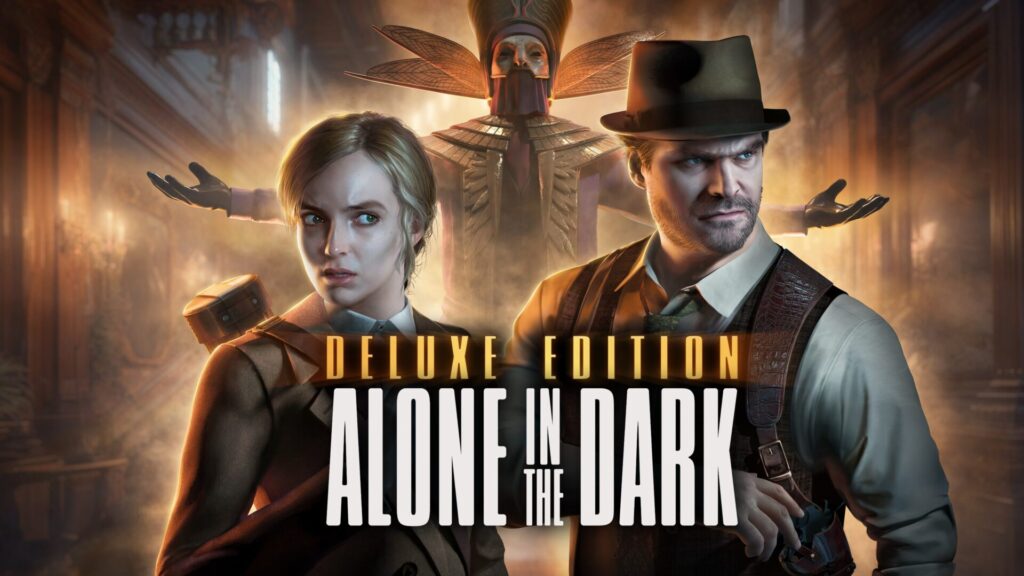Alone in the Dark is a name that echoes through the annals of gaming history, a pioneering survival horror series that set the foundation for the genre in the early 1990s. Over the years, the franchise has seen its share of ups and downs, but its influence on games like Resident Evil and Silent Hill is undeniable. The latest iteration of Alone in the Dark seeks to return to its roots while embracing modern gaming standards. Developed by Pieces Interactive and published by THQ Nordic, this reimagining is both a homage to the original and a bold new take on the iconic franchise.
In this blog, we’ll dive into how Alone in the Dark has been reinvented, its story, gameplay, and whether it successfully recaptures the magic of its origins.
A Return to Derceto Manor
The game transports players back to the hauntingly atmospheric Derceto Manor, the setting of the original 1992 title. Located in the heart of Louisiana, the mansion is a sprawling labyrinth of dark hallways, eerie whispers, and hidden horrors. This time, the story is reimagined with a fresh narrative while retaining the gothic and Lovecraftian influences that made the original so memorable.
Players can choose to step into the shoes of two protagonists: Edward Carnby, the private investigator from the original game, or Emily Hartwood, a resourceful and determined young woman searching for her missing uncle. Each character offers a unique perspective on the story, with subtle differences in dialogue and interactions, encouraging players to experience the game twice for the full narrative.
A Modern Narrative with Classic Roots
The plot of Alone in the Dark blends psychological horror with supernatural elements, creating a narrative that keeps players guessing. Emily’s journey to uncover the truth about her uncle’s disappearance intertwines with Edward’s investigation into the mysteries of Derceto Manor. As they explore the mansion, they encounter a cast of intriguing and unsettling characters, each harboring secrets tied to the manor’s dark past.
The story expertly balances traditional horror tropes with contemporary storytelling techniques. Themes of madness, isolation, and the unknown are explored through chilling cutscenes and environmental storytelling. The writing is sharp, and the voice acting brings the characters to life, with notable performances adding gravitas to the chilling atmosphere.
Gameplay: Survival Horror Reinvented
The developers have stayed true to the survival horror roots of the franchise while introducing modern mechanics to enhance the experience.
Exploration and Puzzles
Exploration remains a core element of Alone in the Dark. The mansion is meticulously designed, with every corner dripping with atmosphere. Players will spend a significant amount of time searching for clues, solving intricate puzzles, and unlocking new areas of Derceto Manor. The puzzles are challenging but fair, encouraging players to think critically and pay attention to their surroundings.
Combat and Survival
Combat in the game is tense and deliberate. Resources are scarce, and every encounter with the mansion’s grotesque inhabitants feels like a life-or-death struggle. The remake introduces a mix of melee and ranged combat, giving players the tools to defend themselves but never enough to feel entirely safe. The balance of vulnerability and empowerment is key to maintaining the suspense.
Dynamic Dual Protagonists
Switching between Edward and Emily provides a fresh perspective on the gameplay. While their paths often overlap, their unique abilities and insights add depth to the experience. For example, Emily’s keen investigative skills might uncover clues Edward would overlook, while Edward’s physical prowess can help in more dangerous situations.
Atmosphere: A Visual and Auditory Triumph
The visuals in Alone in the Dark are nothing short of stunning. From the flickering candles that cast ominous shadows to the detailed textures of the mansion’s decaying walls, the game immerses players in its eerie world. The lighting and weather effects add to the oppressive atmosphere, making every corner of Derceto Manor feel alive with malevolent intent.
The sound design is equally impressive. Creeping footsteps, distant whispers, and the creaking of old wood create an auditory landscape that keeps players on edge. The score, composed by Jason Köhnen, blends haunting melodies with moments of silence, allowing the tension to build naturally.
A Love Letter to Fans and a Welcome for Newcomers
The new Alone in the Dark walks a fine line between honoring its legacy and appealing to a modern audience. Longtime fans will appreciate the callbacks to the original, from iconic locations to subtle Easter eggs. Meanwhile, newcomers will find a polished and accessible horror experience that doesn’t require familiarity with the older games.
The developers have also included a “classic mode” that adjusts certain elements of the game, such as the camera angles and controls, to mirror the feel of the 1992 version. It’s a thoughtful addition that demonstrates a deep respect for the series’ history.
Challenges and Critiques
While the game delivers a compelling experience, it’s not without its flaws. Some players might find the pacing uneven, with moments of high tension occasionally giving way to slower sections that can feel like filler. Additionally, the combat, while effective at creating tension, may feel clunky to those accustomed to more fluid action games.
The dual-protagonist system, while innovative, occasionally leads to redundancy, as players retrace their steps through the mansion. A bit more differentiation between the two characters’ paths could have alleviated this issue.
The Legacy Lives On
Alone in the Dark is a bold revival of a classic franchise, and it largely succeeds in bringing the series into the modern era. By blending traditional survival horror elements with updated mechanics and visuals, it offers a chilling and memorable experience for both fans and newcomers.
For those who cherish the horror genre, Alone in the Dark is a must-play. It captures the essence of what made the original so groundbreaking while carving out its own identity in today’s gaming landscape. As the lights dim and the shadows creep, Alone in the Dark reminds us why we love to be scared.
Conclusion: Whether you’re a seasoned veteran of survival horror or a curious newcomer, Alone in the Dark is a thrilling journey into the heart of darkness that shouldn’t be missed. Turn down the lights, put on your headphones, and prepare to step into Derceto Manor—if you dare




